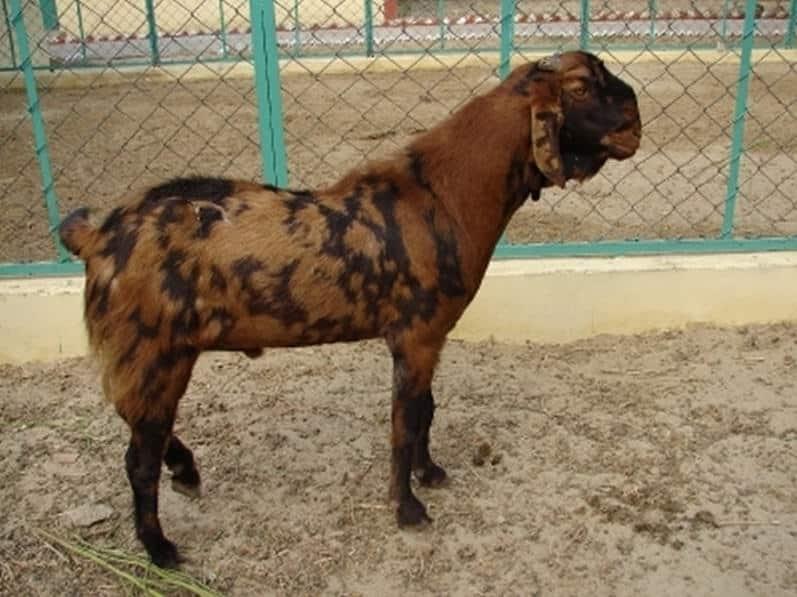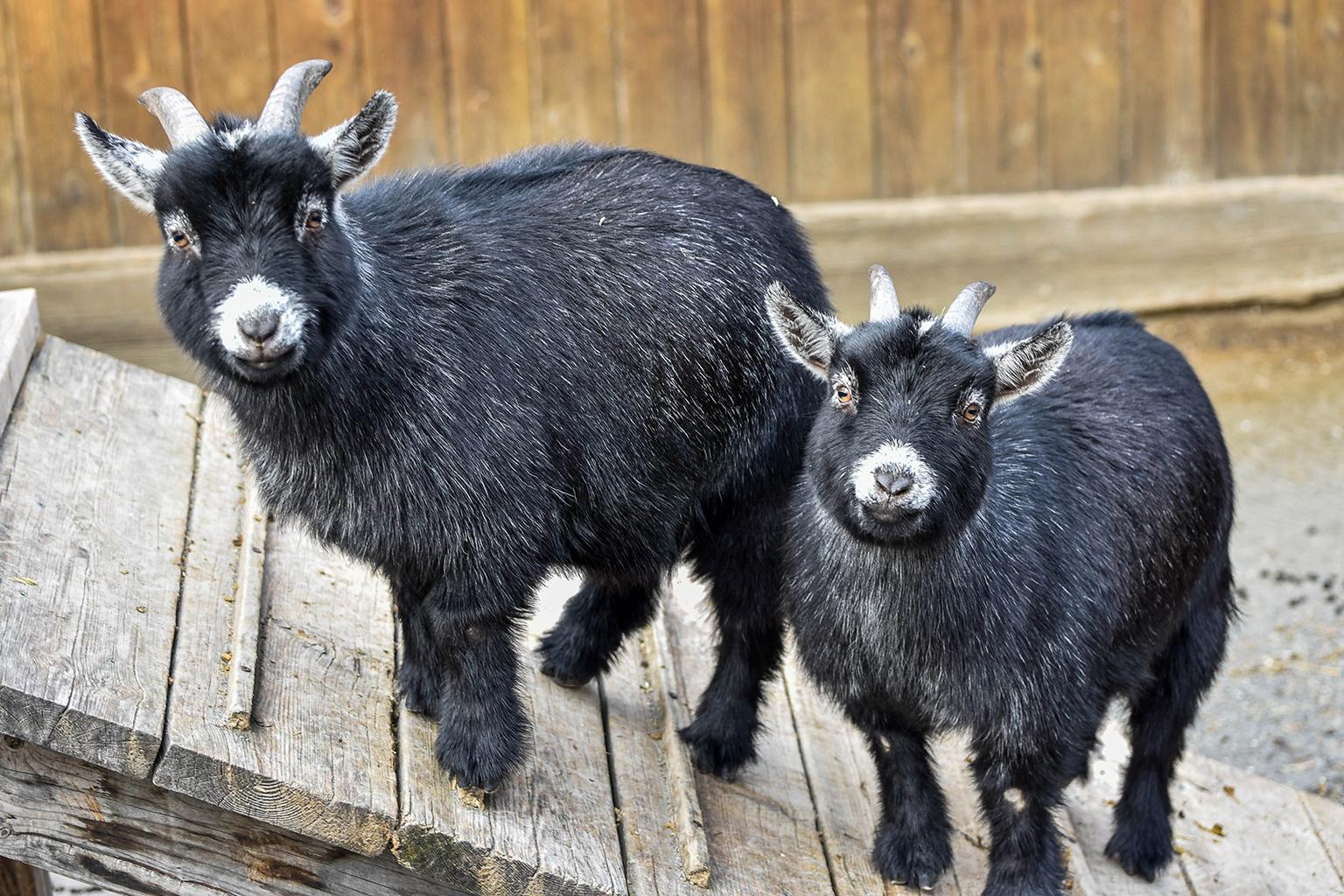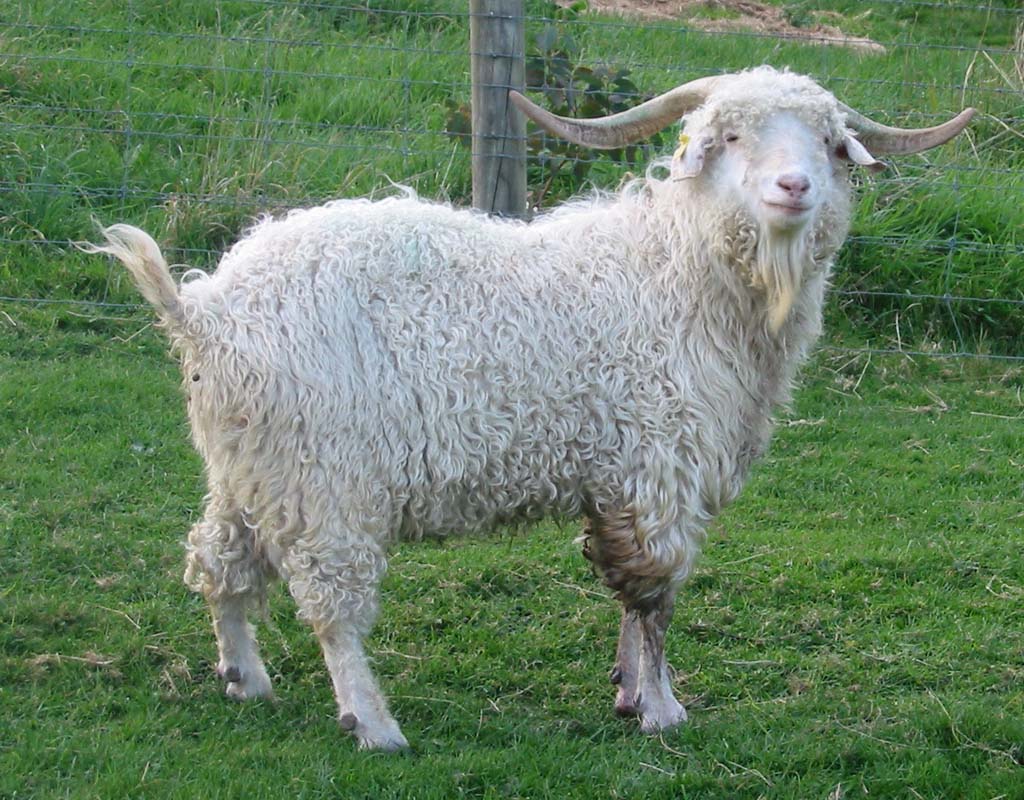Toggenburg Goat
The Toggenburg Goat is a domesticated breed that developed for the first time in Switzerland. This goat is an important dairy breed and is known for its high-quality milk production. The breed is abundantly found throughout its habitat, and is presently spreading in other countries as well.
Quick Information
| Also Known As | Toggenburger, Toggenburger Ziege, Chèvre du Toggenbourg, Capra del Toggenburgo |
| Physical Characteristics | The stature is average or medium sized; the face, lower legs and tail area have white Swiss markings; the face may be either straight or slightly concave (though never convex); facial lines can be either dished or straight (but never roman); ears are erect and carried forward; tassels can be present in both males and females |
| Temperament/Personality | Docile, curious, graceful, nervous, sensitive |
| Coat Hair | Short to medium in length, soft, fine, flat-lying |
| Coat Color | Color varies from light brown to mouse grey |
| Horns | Both billies and nannies may or may not have horns |
| Tail | Erect and slightly bend inward; white triangle present on either side of the tail |
| Uses | Milk production Other Uses: Meat production (especially crossing with other meat breeds) |
| Popular Traits | High milk production |
| Diet/Feeding | Grazing |
| Lactation Period | Normal (270 days approx.) |
| Lifespan/Expectancy | Average |
| Weight | Buck: 75 kg; Nanny: 55 kg (Average adult weight) |
| Height (size) | Buck: 85 cm; Nanny: 75 cm (Average adult height at the withers) |
| Country of Origin | Switzerland |
| Distribution | Worldwide |
| Breed Status | Acknowledged |
| Breed Information | Breed Standard |
History and Development
In 1892, the Toggenburg goat was officially registered as a distinct breed. Records suggest that, back in the 1950s, there were 20,000 in Toggenburg goats in Switzerland. The count, however, came down to around 3000 in the Werdenberg region and to as less as 850 in the Toggenburg region.
In 1901, the St. Gallen Goat Breeders Association was founded in order to officially register these goats. Later, the Verein Ziegenfreunde was also formed to unite the Toggenburg breeders and owners, and thus, protect the breed.
As a dairy goat, these animals were introduced to the United Kingdom and New Zealand. The individuals in New Zealand began to be registered by the New Zealand Dairy Goat Breeders Association. In the UK, they went through a through development program that helped in creating heavier and more robust Toggenburgs with the ability to yield high quality milk.
Milk Production
Known for their milking ability, the Toggenburgs are among the best milk-producing goats. They are highly productive, yielding more than 740 kg per lactation and are also noted for their excellent udder development. The milk is much low in butterfat content, with only about 3% fat and 2.7% protein. The milk obtained from this breed is whiter and is more easily digestible than cow’s milk. The breed performs best in cooler conditions.
Interesting Facts
- The breed gets its name from the place named ‘Toggenburg’ located in the Canton of St. Gallen, its region of origination.
- Since its introduction to the United States, it is the oldest breed of dairy goat in the country.














